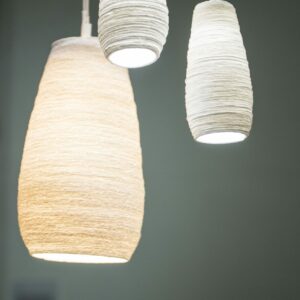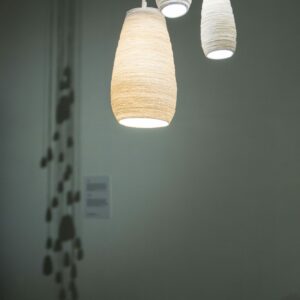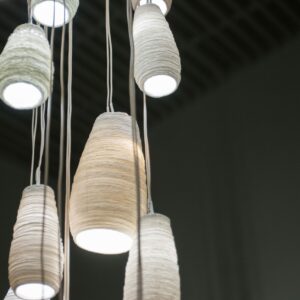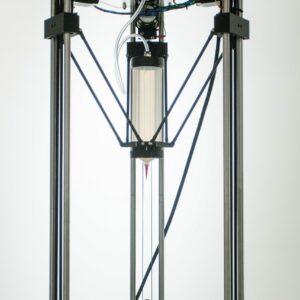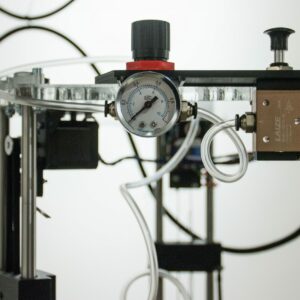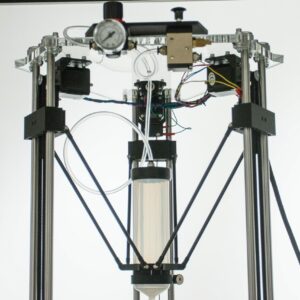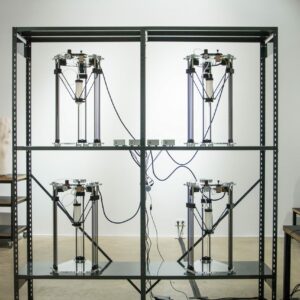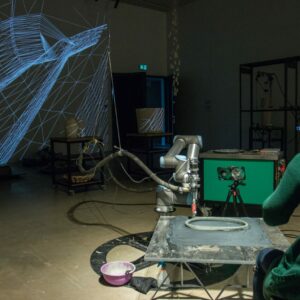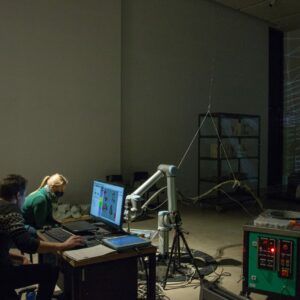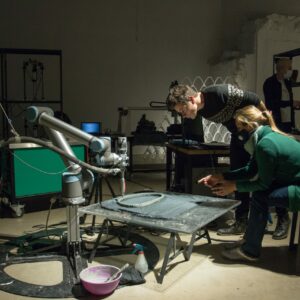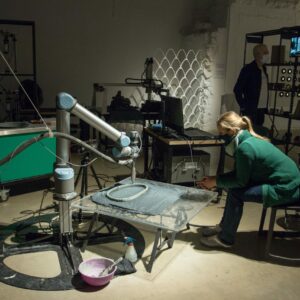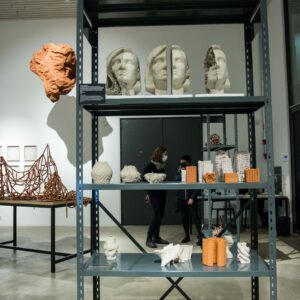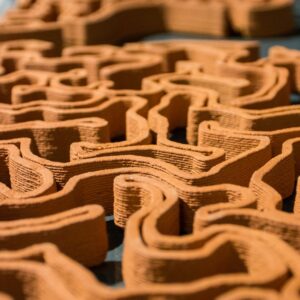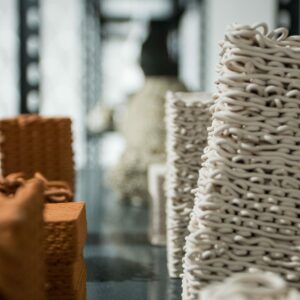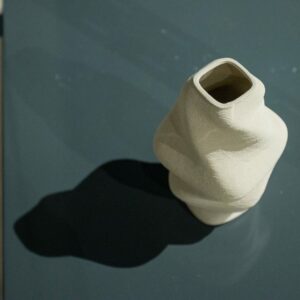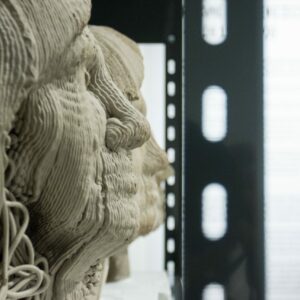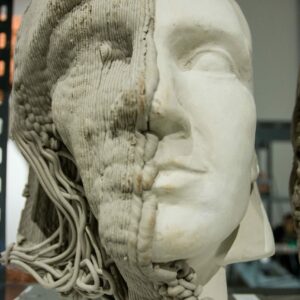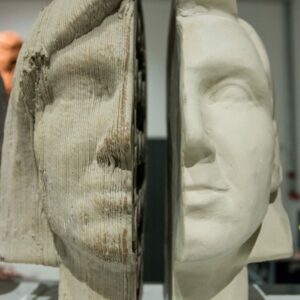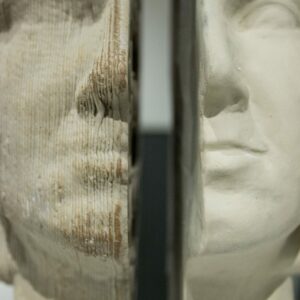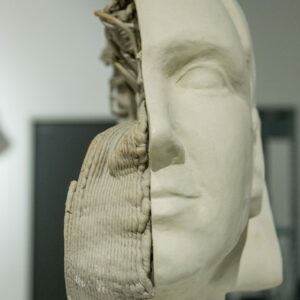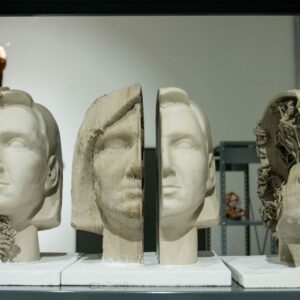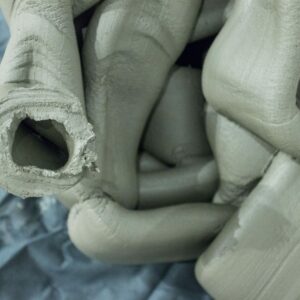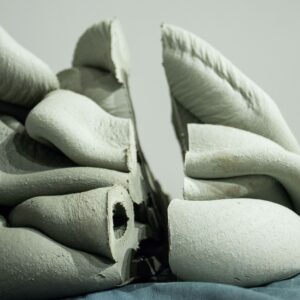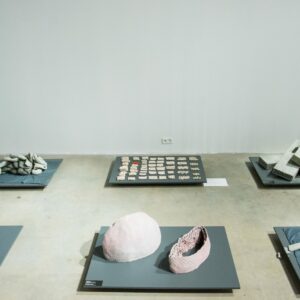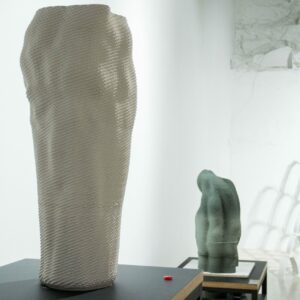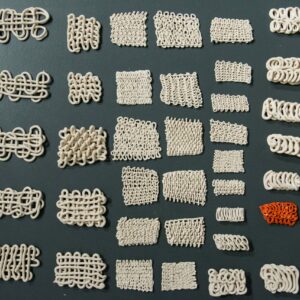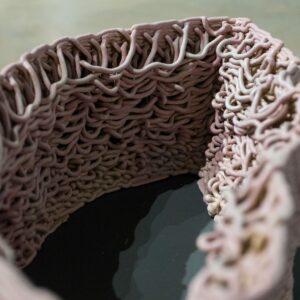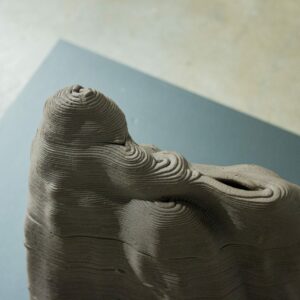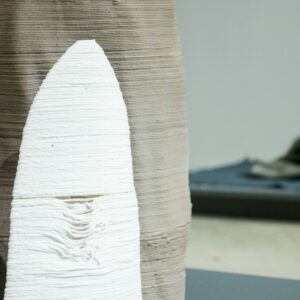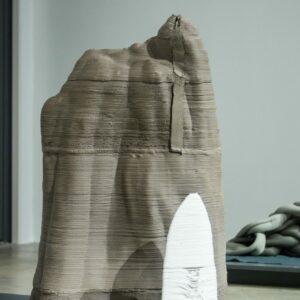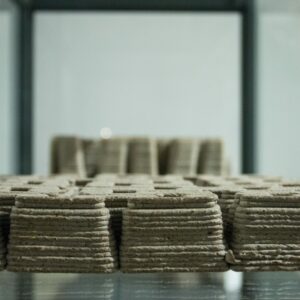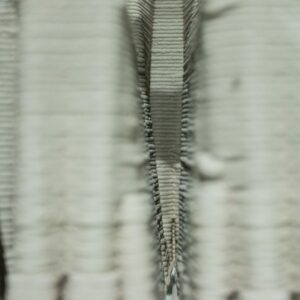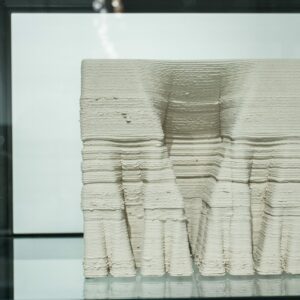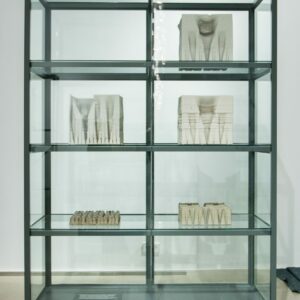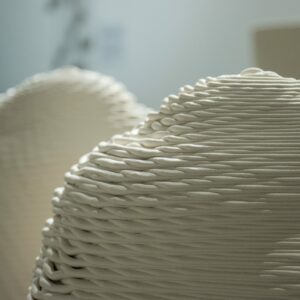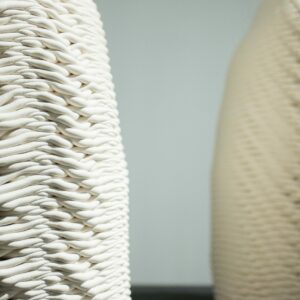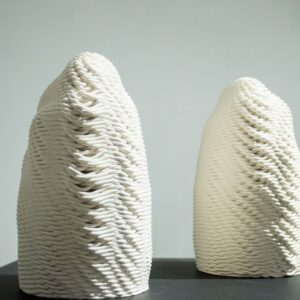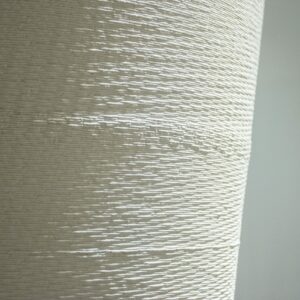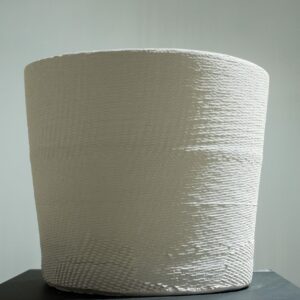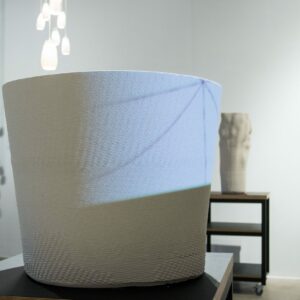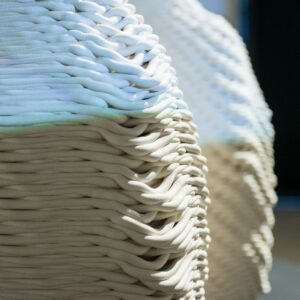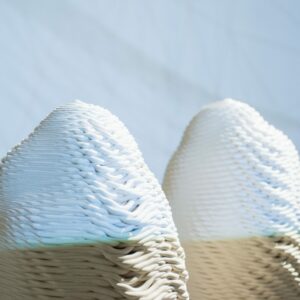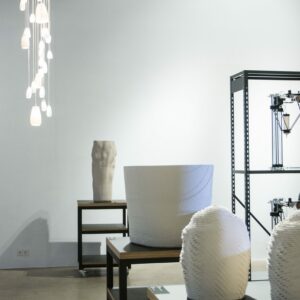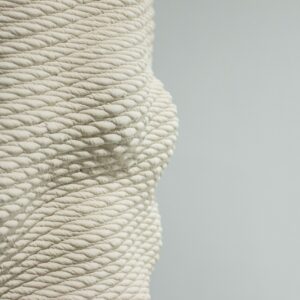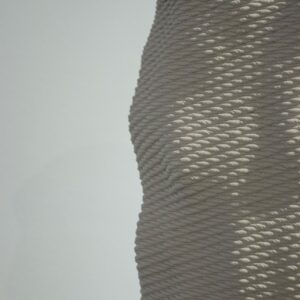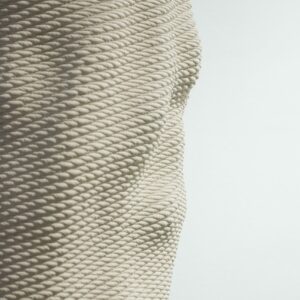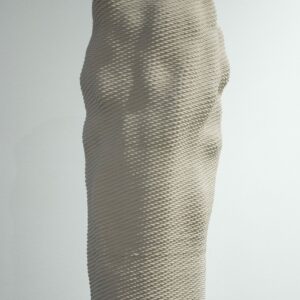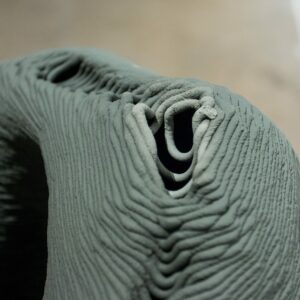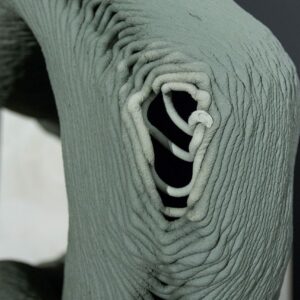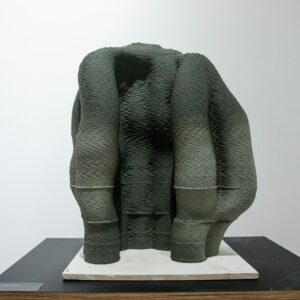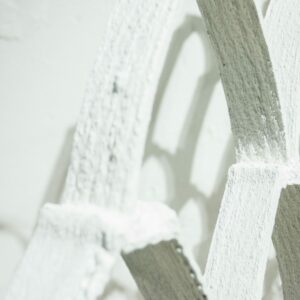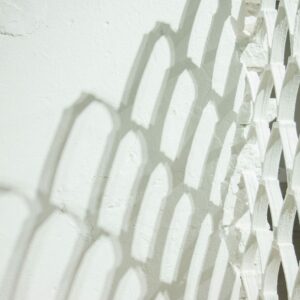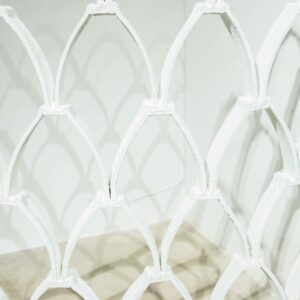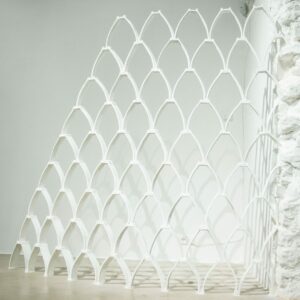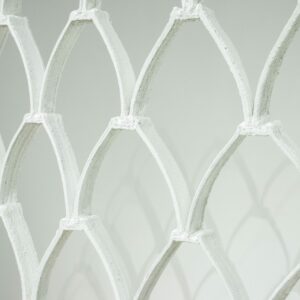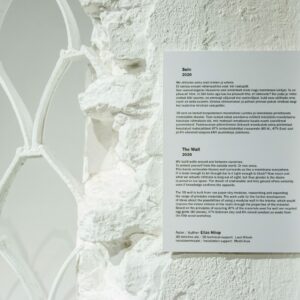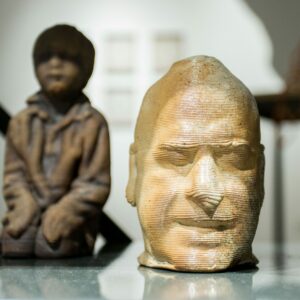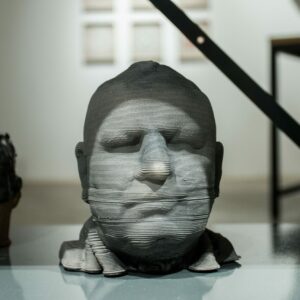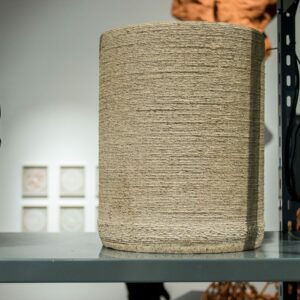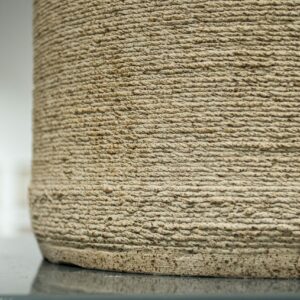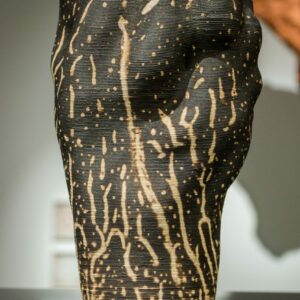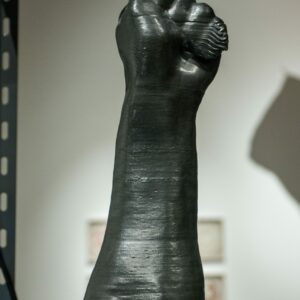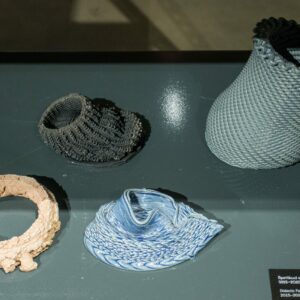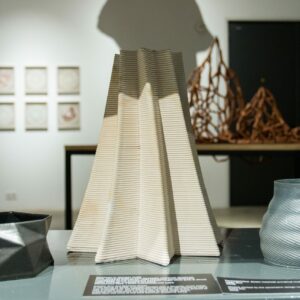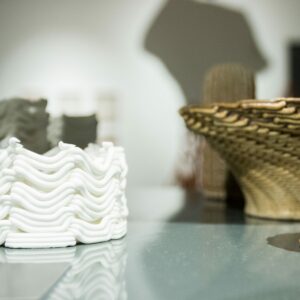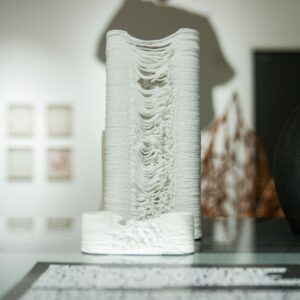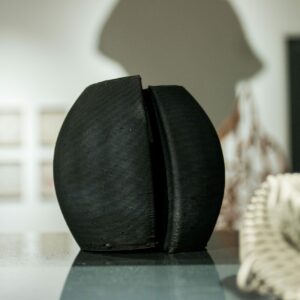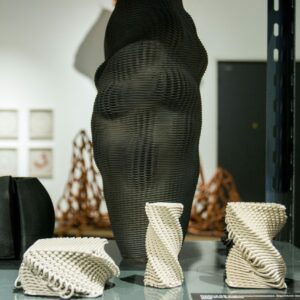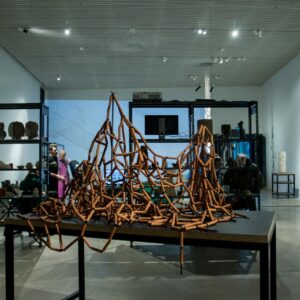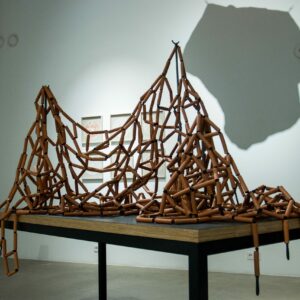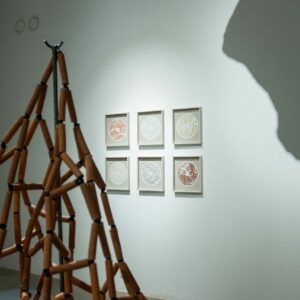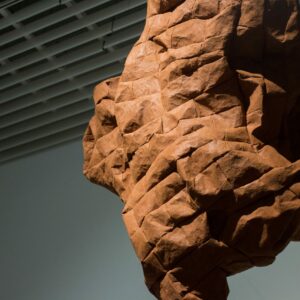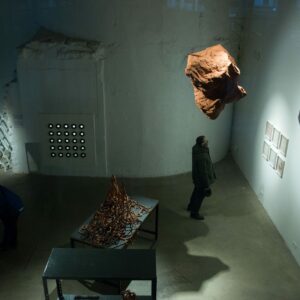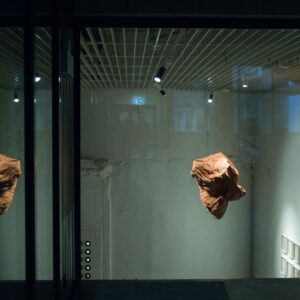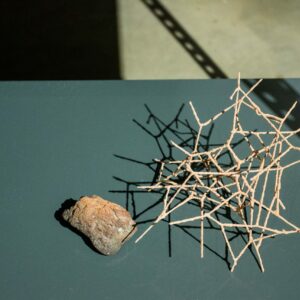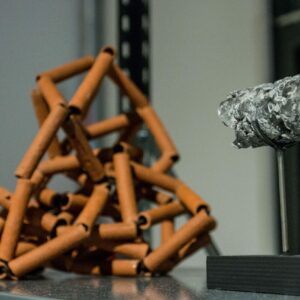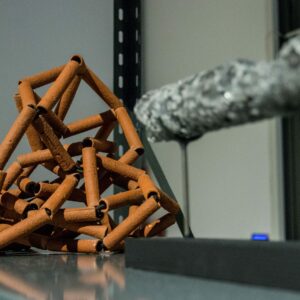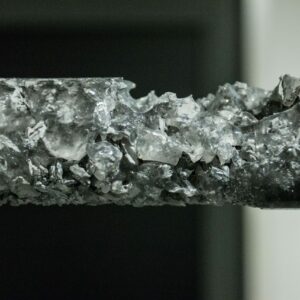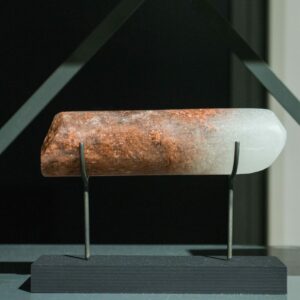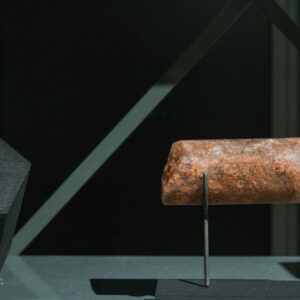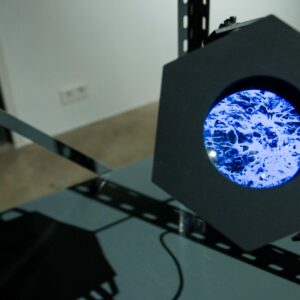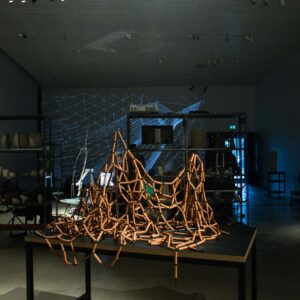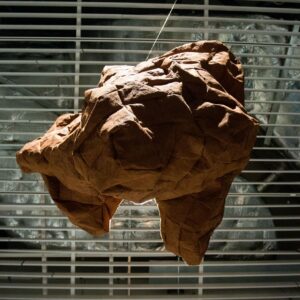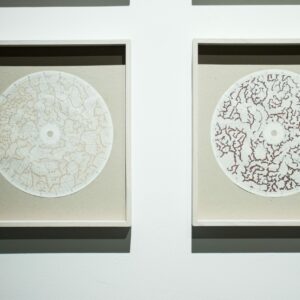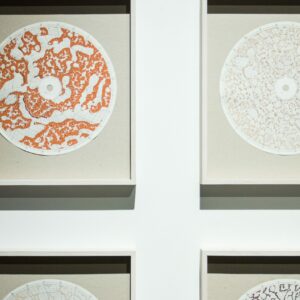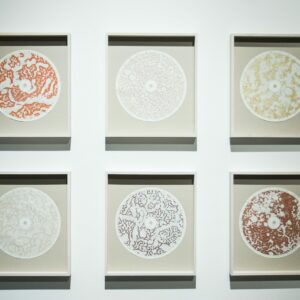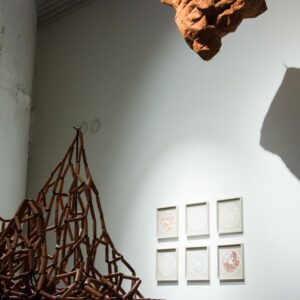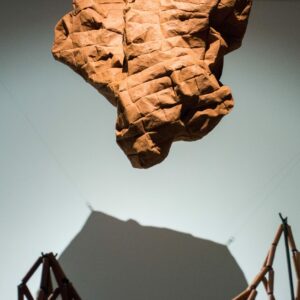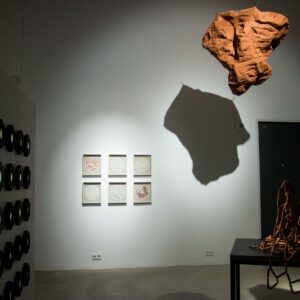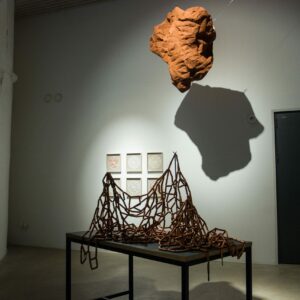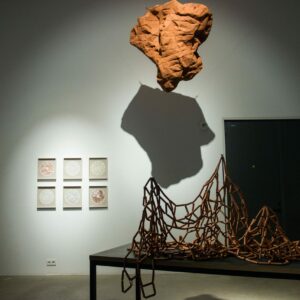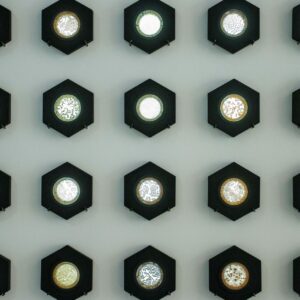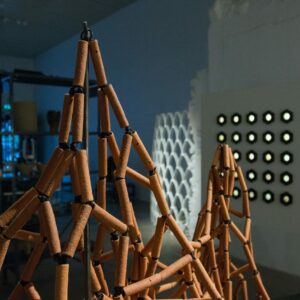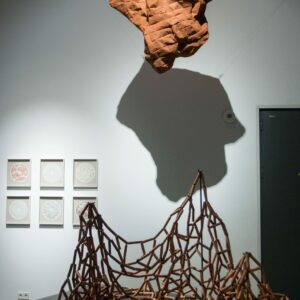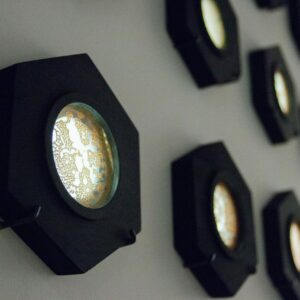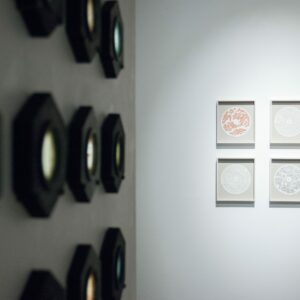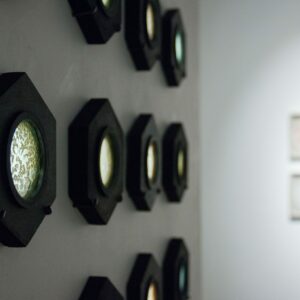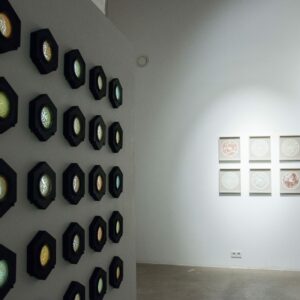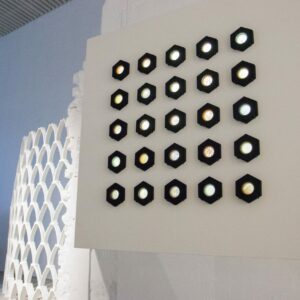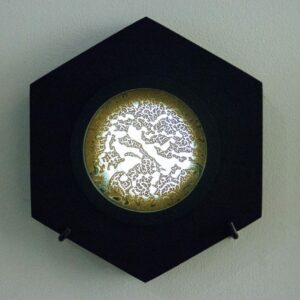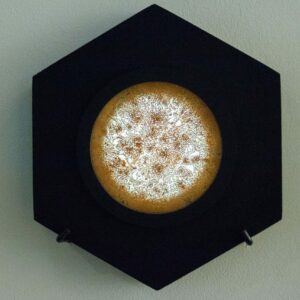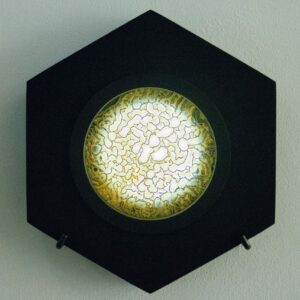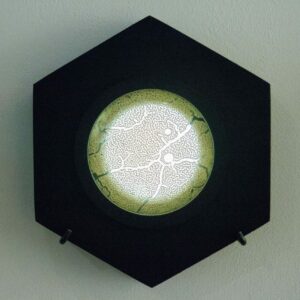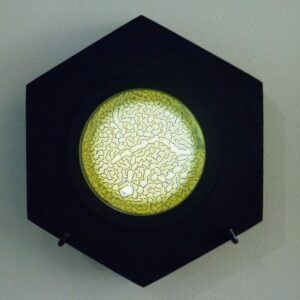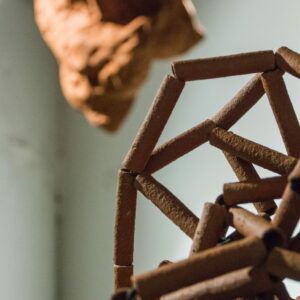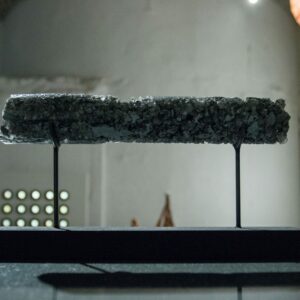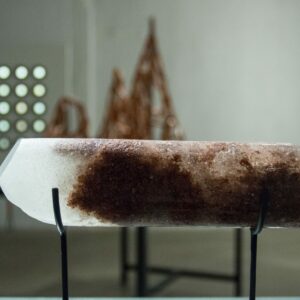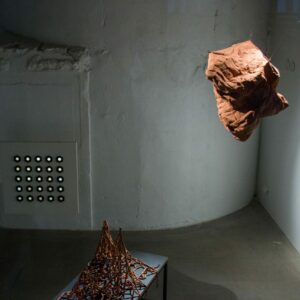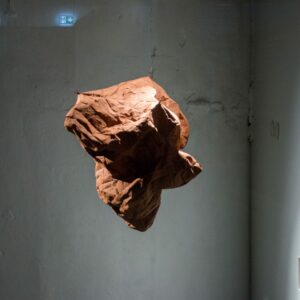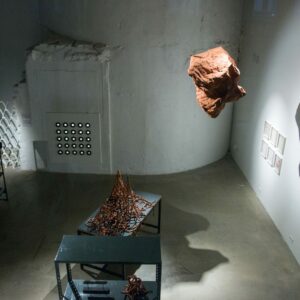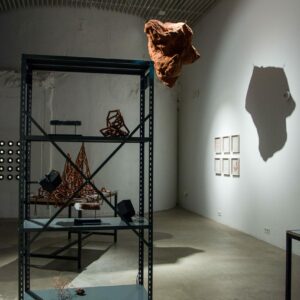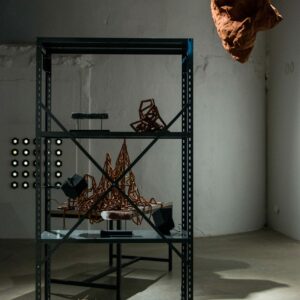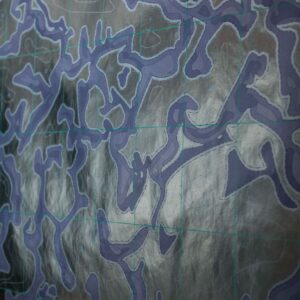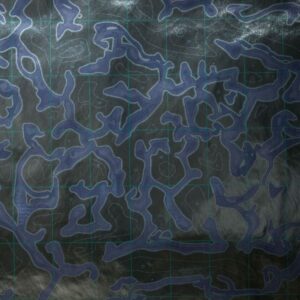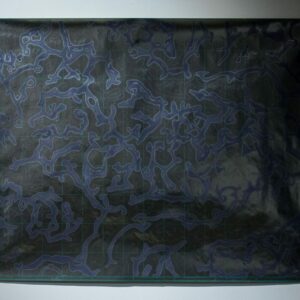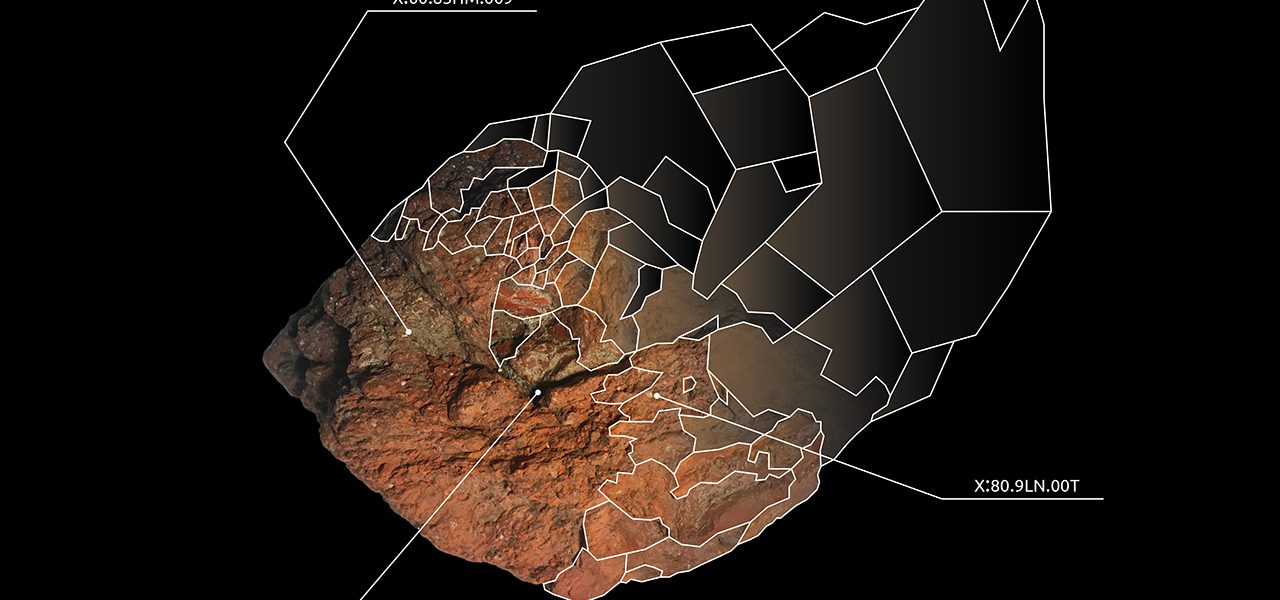
Image: Juss Heinsalu
10.11.2020
End Date:
28.10.2020
Al₂Si₂O₅(OH)₄
Juss Heinsalu
Al₂Si₂O₅(OH)₄ is a simplified formula representing the chemical composition of clay. This exhibit of the same name is a continuation to the exhibition “Surface View” in the monumental gallery of the Tartu Art House (June 2020). It gathers together a wide range of artistic applications of clay in ceramics, glass, printmaking and in new material combinations. Heinsalu deals with clay as a source, medium and environment. In his material-based research and creation practice, he looks at the properties of clay while combining them with mythological derivations, scientific hypotheses and speculative solutions. EKA Gallery displays prints made with clay pigments, fused clay-glass samples, ceramic elements, formed clay-skin from bioplastic and wool mixture, micro-macro scales of clay through video format and much more.
Heinsalu adds: “My studio practice merges materials with invented tools, mythological narratives and folklore with contemporary technology. I often lean on fiction to playfully observe and (re)define the surrounding world. In this exhibition, clay is simultaneously a base material, form, language, metaphor and a reflection.”
Juss Heinsalu studied ceramics at the Estonian Academy of Arts and received his MFA at NSCAD University in Nova Scotia, Canada. Heinsalu deals daily with material-based research and creation, and in Fall 2020 began additional studies in the field of interior architecture at EAA. Previously, he has actively participated in various projects and exhibitions across Europe and North America.
Thanks from the artist for the support of this exhibition and his practice: Estonian Artists’ Association, Arts Nova Scotia, Cultural Endowment of Estonia, the departments of Glass Art, Ceramics, and Jewellery and Blacksmithing at Estonian Academy of Arts, Printmaking department at NSCAD University, Valge Kuup, and artist’s family and friends.
______
Ceramic Dimension
10–28.11.2020
Lauri Kilusk, Martin Melioranski and Urmas Puhkan.
The international workshop-exhibit “Ceramic Dimension“ introduces the possibilities of clay 3D printing in EKA. The project is organized by Urmas Puhkan and Lauri Kilusk from the Department of Ceramics and Martin Melioranski from the Department of Architecture. Huge assistive support from Kaiko Kivi as a system architect and Madis Kaasik from Prototyping Lab.
During the period of almost five years, the professionals and students of different disciplines from EKA and elsewhere in the World, have been engaged in an experimental process, that has taken the knowledge and sensibility gathered through centuries of this specific materiality and combined it with current technological outputs, initiating novel outcomes from a well tested material.
The exhibit “Ceramic Dimension“ gives an overview of the wide spectrum of morphological and space-making topics led by design, art and architectural agendas, that have been brought to the physical environment by stratifying refined clay mass with digital tools and specially designed 3D printers and an advanced collaborative robot.
When compared to the now common plastic filament 3D printing, it brings forth contrasting results – clay is much more “alive”, even after going through the stages of digital-mechanical treatments. Clay, due to its substantiate internal properties, keeps on moving even after receiving its numerically driven exact shape. This in turn gives it a certain character, and avoids the easily attainable repetitive numbness and dryness when compared to regular digital prints from established industrial materials.
This has in some cases been integrated with properties of other materials in order to gain specific composite mixtures. Leftovers of Rockwool, waste paper, sand etc, has introduced a recycling and up-cycling perspective to the process, at the same time improving the printing properties of the base-material.
With our workshop-exhibit we wish to start a broader discussion on the possibilities of 3D clay printing. During this exhibition, the EKA Gallery will transform into a kind of laboratory, where new objects become alive during a continuous experiment. The viewer is expected to ask questions and express opinions, thereby becoming more akin to a participant in this process. We plan to make web-mediated meetings with several internationally recognized and established practitioners of this craft.
Next to the finished works shown and done prior to the opening, the exhibit will gain additional performative layers of integrating machinic intelligence to the joy of human discovery by making new results – showing both successes and mistakes.
Participants: Elize Hiiop, Madis Kaasik, Lauri Kilusk, Kaiko Kivi, Martin Melioranski, Urmas Puhkan Laura Põld, Oksana Teder, Katri Jürimäe, Sanna Lova, Jekaterina Burlakova, Aleksandra Kazanina, Kristel Ojasuu, Helena Tuudelepp.

